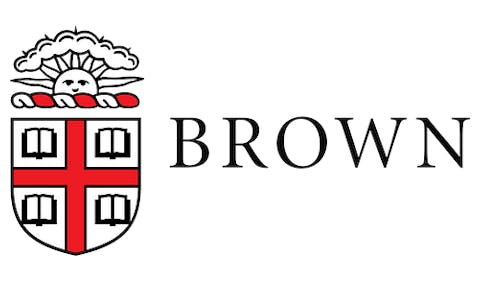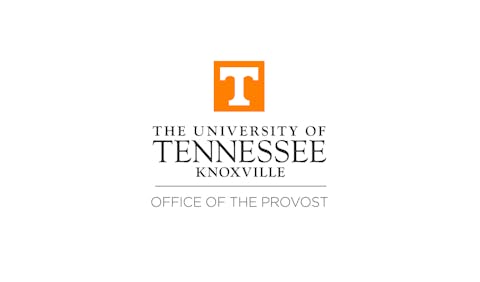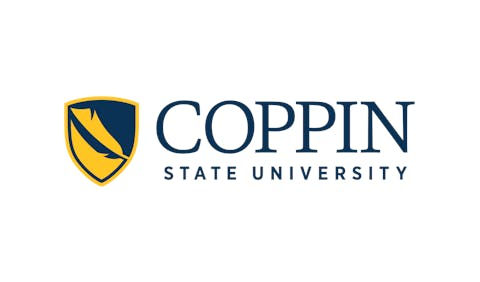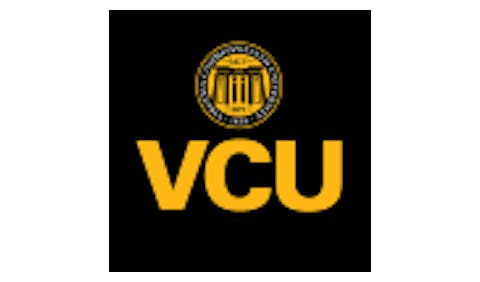 Dr. Uma M. Jayakumar
Dr. Uma M. Jayakumar
Seventy years later, history repeats—but with new language.
When the federal government issued a letter to Harvard University on April 11, it was designed to create fear. The letter demanded a comprehensive restructuring of Harvard’s governance, hiring, admissions, and student life. It instructed the University to dismantle diversity, equity, and inclusion (DEI) programs “under whatever name,” and to cease any admissions or hiring practices that consider race, gender, or even proxies for race. It demanded academic departments be ideologically reshaped, student organizations dismantled, and faculty policed for anything considered “activism.” It mandated the surveillance of all admissions and hiring data and calls for annual ideological audits of every academic unit to ensure “viewpoint diversity"—not as a value, but as a numerical target.
This is not race neutrality. It is ideological capture—an attempt to remake the university in the image of political grievance. The federal memo reads like a wish list from those who have long wanted higher education to retreat from efforts to repair the racialized inequality that plagues this country. And it is made possible only by refusing to name the reality this letter ignores: the endurance of racism, the legacies of exclusion, and the structures and practices within higher education that continue to reproduce advantage.
As Dr. Ibram X. Kendi and I argued in these pages after the Court’s SFFA ruling, so-called “race-neutral” policies often reinforce the very inequities they claim to reject. What’s new is that the federal government is now using that logic to impose structural amnesia—replacing racial literacy with silence, and calling it merit.
The fantasy here is not just that racism has disappeared. It’s that institutions committed to justice are the real danger. That student protests against war, colonialism, or genocide are threats to campus life, while administrative compliance with authoritarian demands is somehow neutral.
The strategy at play—one long in the making—is what legal scholar Cheryl Harris once called the “whiteness as property” doctrine: a legal framework that cloaks white access and advantage in the language of fairness. This week’s memo extends that doctrine by claiming that even acknowledging racial disparity constitutes bias. That naming the conditions that shape unequal opportunity is itself discriminatory.
But we understand, as humans, that fairness has to be considered in context. Parents do this all the time.
My daughter, like most five-year-olds, is in a phase where everything is “not fair.” She recently made an impassioned argument that it’s unfair for left-handed people like her to have to learn to write from left to right, like right-handed people like me and her dad. She explained how it’s harder—the ink smudges, the hand motion feels awkward, and it’s just uncomfortable.
As a parent, I had to make a judgment. Her frustration is real, and I can affirm that. But it’s not rooted in structural exclusion. Left-handed people don’t experience worse educational outcomes than right-handed people. There’s no intervention needed. In contrast, if she said her teacher discouraged her from joining a STEM project the boys were doing, I’d talk with her teacher—because that fits a well-documented pattern of girls, especially girls of color, being tracked out of STEM fields.
This is the kind of critical discernment educators and institutions must be free to practice. Most parents do it intuitively: Is this about comfort, or is it about justice?
If we cannot name, we cannot teach. And if we cannot teach, we cannot build the critical literacies that this moment demands.
We’ve seen this before. During the Red Scare, when professors and university employees were forced to sign loyalty oaths or risk losing their jobs. During the 1960s, when Black student organizers were cast as threats to campus safety for demanding ethnic studies, community control, and an end to war. At my alma mater, UCLA, Black student leaders were surveilled and harassed after organizing to demand a Black Studies department. It was part of a broader wave of FBI interventions under COINTELPRO, which labeled racial justice movements “subversive,” “radical,” and threats to institutional order. Each time, the state responded to critique not with dialogue, but with discipline-- through firing, surveillance, curricular censorship, and the silencing of student movements. Today’s memo doesn’t just echo that legacy. It repurposes it, using the language of civil rights to enforce compliance and remake the university in the image of political control.
The administration’s memo targets racial equity work explicitly. But its implications extend to every scholar, student, and campus community committed to truth. It sets a precedent that federal funding can be tied not to legal compliance but to ideological conformity. That universities must prove not just their legality but their political alignment.
And just as “separate but equal” allowed states to deny Black students access to equal education under the cover of false parity, “race neutrality” now allows federal agencies to favor wealthy and white people under the guise of fairness.
The memo calls for “merit-based” admissions—even though students from families in the top 20% of earners are seven times more likely to score above 1300 on the SAT or a 29 on the ACT than those from the bottom 20%. The memo assumes it is race-based admissions that creates unfairness, when a study by economists found that 43% of white students admitted to Harvard were recruited athletes, legacy applicants, children of faculty, or on the dean’s interest list—reserved for relatives of donors. Roughly 75% of them would have been rejected if not for those advantages. “Merit,” in this context, is not race-neutral. It’s built atop accumulated advantage.
The memo calls for “viewpoint diversity,” while singling out disciplines like public health, human rights, and education for scrutiny—simply because they engage with issues of inequality.
It demands surveillance of international students—not for academic misconduct, but for “hostility to American values.” This has created a chilling effect. At Columbia University, the arrest and attempted deportation of Palestinian student Mahmoud Khalil by ICE—without any criminal charges—left many international students feeling targeted and afraid. Some stopped attending protests, deleted social media posts, or left the country altogether. The memo also directs Harvard to defund and deregister any student organization involved in protest following October 7—even when those protests include Jewish and Israeli students critical of the war, including members of groups like Jewish Voice for Peace and IfNotNow.
This isn’t about civil rights. It’s about control. And it’s only possible in a nation where the persistent denial of racism has become a governing strategy.
How We Got Here
This moment is the product of years of organized misdirection. The same logic that animated the campaign against "critical race theory" in K-12 classrooms is now being scaled to higher education, replacing racial literacy-- the capacity to recognize, name, and respond to racial injustice-- with ideological litmus tests. And once "neutrality" is established as the governing fiction, every concept once used to expand opportunity can be redefined and weaponized.
In public discourse, “DEI” became a catch-all for any effort to name or disrupt inequality. “Divisiveness” was branded onto curriculum that taught the history of race, gender, and empire. And once that brand stuck, every race-conscious policy—no matter how lawful, tailored, or effective—could be recoded as a form of bias. The very language once used to expand equity has been flipped. “Critical mass” becomes a justification to purge students or scholars whose views disrupt the new consensus. “Hostile climate” becomes a tool to suppress dissent, rather than a way to name the harm done to marginalized students. “Inclusion” becomes exclusionary the moment it dares to name race.
The magic trick is always the same: co-opt the language of justice to serve the ends of power. The distraction was orchestrated by conservative activist Christopher Rufo, who publicly bragged about creating a boogeyman out of CRT—filing everything under the label, “freezing” the brand, and turning it toxic. That strategy has since been applied to “DEI,” which, unlike CRT, has long been subject to progressive critique and improvement. But now, it too has been weaponized—serving as both scapegoat and branding tool for more than 800 anti-CRT and anti-DEI bills that ban books, censor curriculum, and restrict the teaching of historical fact. In the latest iteration of this branding playbook, as we see in the April 11 letter, unsubstantiated claims of “antisemitism” are being invoked to justify large-scale policing of the curriculum, the suppression of knowledge production, and egregious violations of institutional autonomy.
Harvard's Response
Harvard’s initial response to the federal memo was measured. But its follow-up was historic.
On April 15, just days after the federal government’s ultimatum, Harvard University issued a formal refusal. It declined to dismantle its diversity, equity, and inclusion efforts. It made clear that admissions decisions would not be subjected to political review. And it rejected the demand for ideological audits of departments, faculty, and students—even at the cost of more than $2 billion in federal research funding.
Harvard’s refusal matters not because the institution is perfect, or even particularly brave, but because it offered a rare moment of clarity in a fog of institutional compliance (even as it simultaneously renamed its Office for Equity, Diversity, Inclusion, and Belonging to “Community and Campus Life”—a move widely interpreted as a strategic adaptation to federal scrutiny). It affirmed that a university’s commitment to truth cannot be subordinated to ideological conformity—not without sacrificing its soul.
The parallels to the past are hard to ignore. In 1954, Harvard complied with federal pressure to sanction a professor who refused to cooperate with McCarthy-era fearmongering. Today, it’s being told to eradicate efforts to confront structural inequality—recast as bias, “hostility,” or un-American Values. Then, it was Communism. Now, it’s racial justice. And once again, the state is trying to reshape the university—not through law, but through coercion.
This time, Harvard said no.
Yet saying no was only the beginning. In the days that followed, the federal government froze over $2.2 billion in research funding, launched investigations into Harvard’s operations, and targeted even the Harvard Law Review for alleged bias. These moves revealed the memo was never about negotiation—it was about control. History shows that compliance with political coercion does not end intrusion; it invites more. Loyalty oaths during the McCarthy era did not protect universities from repression; they hastened it. The current campaign follows the same pattern. Not resistance, but compliance, is what emboldens deeper encroachment.
But this memo was never just about Harvard. It was a template—a model for what the federal government hopes to replicate across higher education. Columbia, Penn, Cornell, Princeton, and Brown have all made concessions—ranging from policy changes to DEI rollbacks—in response to federal pressure under the Trump administration’s recent crackdown on DEI. These early capitulations only sharpen the clarity of Harvard’s refusal.
What happens next depends on how we understand the space we’re in. Fairness, equity, and justice have always been contested—not neutral or settled, but shaped by power, history, and interpretation. In this moment, we are not outside that contest; we are participants in it. Institutions will either reproduce the logic of whiteness or challenge it. They will either engage in interpretive overreach—or resist it.
The question now is not just who else will say no—but whether institutions will organize together to say it.
Building Racial Literacies
We must expand, not contract, our racial literacies. That means understanding that inequity is not accidental. It is cumulative, patterned, and generational. And it means teaching that with clarity—especially now, when clarity is being punished.
We are living in a moment when the very meanings of fairness and justice are being rewritten—not through debate, but through coercion and distortion. But these concepts have never been neutral. They are contested spaces, shaped by power, history, and interpretation. We’ve already seen how interpretive overreach—treating any acknowledgment of racism as racism itself—has become a key tactic in this moment. The federal investigation into the Harvard Law Review offers a stark example. Simply considering the racial and social impacts of scholarship has been rebranded as discrimination itself—weaponizing civil rights language to suppress academic judgment. It’s not a legal necessity. It’s a political strategy. And institutions don’t have to adopt it.
Racial literacy begins with recognizing that harm is not evenly distributed. It means tracing how advantage accumulates and how exclusion is reproduced. It means connecting a student’s zip code to the quality of their school, their access to AP classes, their likelihood of being policed. It means naming how “colorblind” policies still produce color-coded outcomes. It means asking: Who benefits from this silence? Who is being made invisible?
Fairness means context. And as we’ve already seen, the kind of discernment we expect from parents is exactly what institutions now need to practice—especially when federal claims of fairness echo the logic of a five-year-old: collapsing discomfort and structural harm into the same category. I’ve begun using the term interpretive reimagination to name this kind of discernment at the institutional level. Where interpretive overreach narrows possibility in the name of caution, interpretive reimagination approaches policy with ethical clarity—treating ambiguity as a space for justice, not retreat.
If higher education is to survive this moment with integrity, it will not be because a few elite institutions make individual stands. It will be because a broader coalition of colleges, faculty, students, and communities insist on something better. Because they refuse compliance masquerading as neutrality. Because they insist on truth.
We are not observers of contested space. We are participants in its reimagining.
Dr. Uma M. Jayakumar is an Associate Professor in the Graduate School of Education at University of California, Riverside.



















